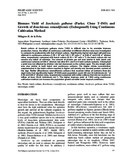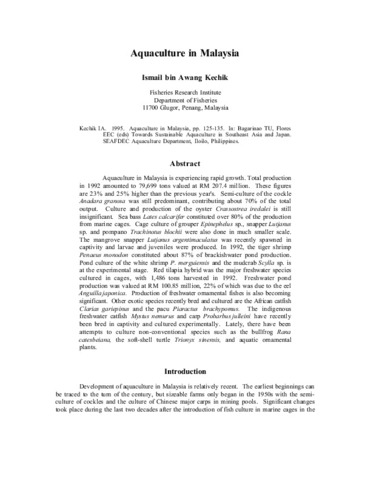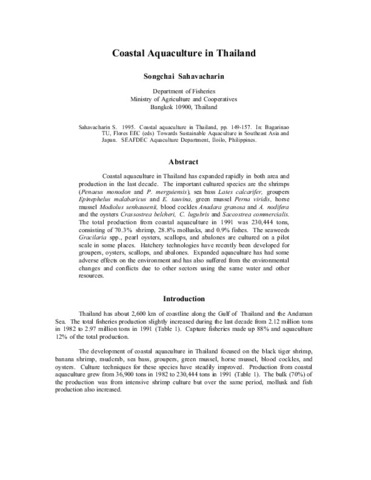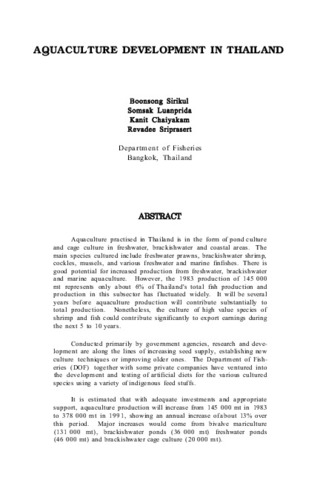Biomass yield of Isochrysis galbana (Parke; clone T-ISO) and growth of Brachionus rotundiformis (Tschugunoff) using continuous cultivation method
Share
Abstract
Batch culture of Isochrysis galbana clone T-ISO is difficult due to its unstable biomass production; hence, the effect of continuous cultivation at different dilution rates was investigated to compare its productivity with that of batch culture. Significantly higher total algal cell yield was attained in continuous cultures (1.70 × 108 and 1.03 × 108 cells L-1 at 0.60 d-1 and 0.30 d-1 dilution rates, respectively) compared with batch culture (0.16 × 108 cells L-1); the batch culture did not receive any inflow of nutrients. The amount of protein per cell was similar in both batch and continuous cultures at 0.60 d-1 dilution rate after 24 h and 5 d in both culture systems. Chlorophyll a yield was not affected by dilution rate but decreased as the culture aged. The dry weight yield was also similar in both batch and continuous cultures. The higher nitrate concentration supplemented in the batch culture resulted in higher cell density and elevated protein content of the alga. Rotifer (Brahionus rotundiformis) cultures that received inflow of nutrients from the algal tanks had significantly higher (P<0.05) peak population count (28 and 33 individuals mL-1 at 0.30 and 0.60 d-1 dilution rates, respectively) compared with rotifer cultures that did not receive an inflow of food (18.22 individuals mL-1). The higher biomass yield of T-ISO using continuous cultivation method can increase the population growth of rotifer under tropical conditions.
Suggested Citation
de la Peña, M. R. (2014). Biomass yield of Isochrysis galbana (Parke; clone T-ISO) and growth of Brachionus rotundiformis (Tschugunoff) using continuous cultivation method. Philippine Agricultural Scientist , 97(2), 161-170. http://hdl.handle.net/10862/2243
Subject
Taxonomic term
Collections
- AQD Journal Articles [1248]
Related items
Showing items related by title, author, creator and subject.
-
Aquaculture in Malaysia
Kechik, Ismail bin Awang. (Aquaculture Department, Southeast Asian Fisheries Development Center, 1995)Aquaculture in Malaysia is experiencing rapid growth. Total production in 1992 amounted to 79,699 tons valued at RM 207.4 million. These figures are 23% and 25% higher than the previous year's. Semi-culture of the cockle ... -
Coastal aquaculture in Thailand
Sahavacharin, Songchai (Aquaculture Department, Southeast Asian Fisheries Development Center, 1995)Coastal aquaculture in Thailand has expanded rapidly in both area and production in the last decade. The important cultured species are the shrimps (Penaeus monodon and P. merguiensis), sea bass Lates calcarifer, groupers ... -
Aquaculture development in Thailand
Sirikul, Boonsong; Luanprida, Somsak; Chaiyakam, Kanit; Sriprasert, Revadee (Aquaculture Department, Southeast Asian Fisheries Development Center, 1988)Aquaculture practised in Thailand is in the form of pond culture and cage culture in freshwater, brackishwater and coastal areas. The main species cultured include freshwater prawns, brackishwater shrimp, cockles, mussels, ...




